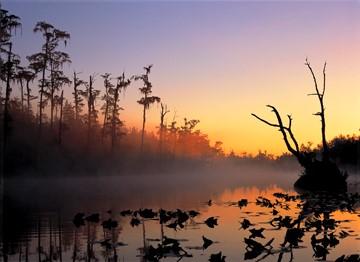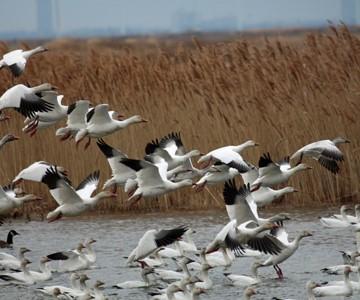May is American Wetlands Month
 Okefenokee NWF, Georgia. By Diane Kirkland EPA-sponsored 2015 RAMSAR Photo ContestAmerican Wetlands Month is a time when the EPA and our partner federal, state, tribal, local, non-profit and private sector organizations celebrate the vital importance of wetlands to our Nation’s ecological, economic, and social health. Wetlands help improve water quality and supply, reduce flooding and provide critical habitat for plants, fish and wildlife.
Okefenokee NWF, Georgia. By Diane Kirkland EPA-sponsored 2015 RAMSAR Photo ContestAmerican Wetlands Month is a time when the EPA and our partner federal, state, tribal, local, non-profit and private sector organizations celebrate the vital importance of wetlands to our Nation’s ecological, economic, and social health. Wetlands help improve water quality and supply, reduce flooding and provide critical habitat for plants, fish and wildlife.
Celebrate! Learn! Explore!
Learn about wetlands. This is a great time to better understand what a wetland is, where wetlands can be found, and the importance of wetlands in your community. Read about what some State and Tribes are doing to protect their wetlands.
Explore a wetland near you. Wetlands occur in all 50 states, so there is a good chance a scenic wetland exists nearby for you to visit and explore during American Wetlands Month and throughout the year! To find a wetland near you, consult your local parks department, state natural resource agency or the United States Fish and Wildlife Service's National Wetlands Inventory.
Why Celebrate Wetlands?
Wetlands are renowned for their ability to remove excess nutrients, toxic substances, and sediment from water that flows through them, helping to improve downstream water quality and the overall health of waters in our communities. Studies indicate that, depending on the type of wetland, the season, and other factors, wetlands can retain significant percentages of pollutants such as nitrates, ammonium, phosphorus, and sediment loads. Natural wetlands have also been effective in removing harmful contaminants such as pesticides, landfill leachate, dissolved chlorinated compounds, metals, and excessive storm water runoff. They are so effective at improving water quality they have been referred to as the “kidneys” of a watershed.
Wetlands can absorb excess rain or river water so they protect against flooding. They are a form of green infrastructure that also provides recreational opportunities and serves as important habitat for many wildlife species. They are both an effective and economical way to enhance community safety while improving quality of life.
History of American Wetlands Month
 Snow geese at Edwin B. Forsyth NWR, New Jersey. By Kelly Hunt EPA-sponsored RAMSAR 2015 Photo Contest
Snow geese at Edwin B. Forsyth NWR, New Jersey. By Kelly Hunt EPA-sponsored RAMSAR 2015 Photo Contest
American Wetlands Month was created in 1991 by EPA and its federal, state, tribal, local, non-profit, and private sector partners to celebrate the vital importance of wetlands to the Nation's ecological, economic, and social health and to educate Americans about the value of wetlands as a natural resource. Historically, annual events such as national and regional conferences have been organized to include a broad range of people including wetland scientists, educators and public interest.
Celebrate American Wetlands Month!
- Read about past American Wetlands Month Events.
- Read about the current National Wetlands Award Winners. Exit
American Wetlands Month Partners
- Association of State Wetland Managers
- Department of Commerce, National Oceanic and Atmospheric Administration
- Department of Interior, U.S. Fish and Wildlife Service
- Department of Interior, U.S. Geological Survey
- Environmental Law Institute
- Izaak Walton League of America
- National Park Service
- Society of Wetland Scientists
- U.S. National RAMSAR Committee
Follow us on Twitter @EPAwater.
